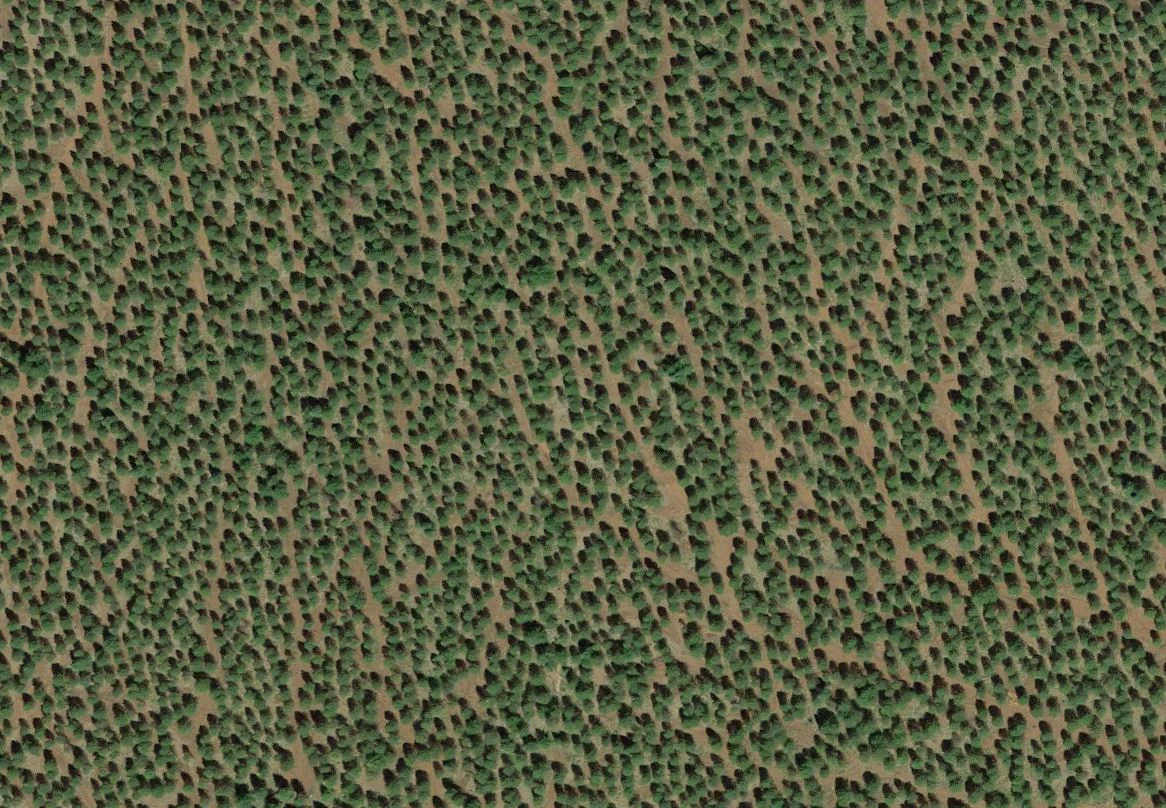Plantations. Burn. Hot.
The evidence is there. When a forest is clearcut and replanted, a timber plantation of dense, young trees takes hold. The consequences for the landscape are more severe fire impacts and provide a source of hot embers to spread wildfires.
Wildfire is a natural process in many ecosystems around the globe. For tens of thousands of years, frequent lightning sparked wildfires rejuvenated forests of the Western U.S. Indigenous People used fire extensively in southern Oregon and northern California as a tool to favor certain conditions. Policies over the past 100 years or more attempted to suppress wildfire and ban Tribal fire use, leading to a buildup of flammable brush and trees over time. As the climate warms and droughts become common, wildfires are more extreme and a life or death concern for communities near fire prone landscapes.
What is a Tree Plantation?
A tree plantation can be characterized by an even-age forest planted for a high volume production of wood, usually by planting one type of tree as a monoculture forest after a clearcut. The trees planted in these industrial forests are typically planted close together to maximize future timber profit and lack the diversity of plant life of a native forest. Because these even-age trees are so young and planted so tightly, they are not as resilient to fire as diverse, old-growth forests are which leads to devastating high-severity burns when wildfire strikes.
Forests of Fire
While there are many factors that contribute to fire severity (land ownership, steepness of slopes, climate (including drought, heat, and weather conditions), people are often interested in how the types of forest fuels (grasses, brush, branches, trees, etc.) and how they are arranged on the landscape influence fire behavior. While it is often difficult to determine which of these factors contributed most to fire severity in a given place, scientists are attempting to tease apart these factors as they study how land management influences fire behavior.
Tree Plantations Burn More Severely
Several studies now show pretty conclusively that tree plantations burn more severely than native forests, and especially older forests with large trees. A plantation often starts from a clearcut and is planted very densely with a single tree species. Both industrially owned and publicly owned forests contain vast areas of tree plantations, and there are several million acres of tree plantations in the Klamath-Siskiyou Region.
Show Me the Research:
-
A 2018 study from Oregon State University concluded that in the 2013 Douglas Complex Fire, industrial owned plantation forests burned with greater severity than publicly owned forests. The industrial forests were stocked with young, closely planted trees while the public land had a mixed conifer forest with many older trees. Weather was the main driver in forest fire activity, but after controlling for weather, researchers determined that plantations burned with greater severity. A 2004 study in the Klamath Mountains and a 2009 study after the Biscuit fire found similar results. Read more about the 2018 study here.
-
In 2022, researchers looked at the devastating 2020 Oregon Labor Day fires and found that while wind, terrain, and humidity played a huge role in fire effects, fuels were also important. Industrial forests that were clearcut and replanted – primarily for timber production – burned more severely than their older and taller counterparts, over the entire fire area. This confirms previous findings about plantations burning more severely (see a 2004 study in the Klamath Mountains for an example).
-
Another 2022 research project that looked at over 150 fires across several million acres in California found greater high-severity fire in industrial forests. They found that the odds of high-severity fire on “private industrial” lands were 1.8 times greater than on “public” lands.” Given that weather is impossible to control (aside from taking action to reduce climate change emissions), forest managers and policy makers often focus on managing vegetation to control the spread and intensity of forest fires. Check out the study on higher incidence of high-severity fire in and near industrially managed forests
Climate Change and Forest Fires
The Klamath-Siskiyou region of southwest Oregon and northwest California is an environment where mixed-severity fire is a historical reality. As the area moves toward a hotter and drier climate, it is becoming more apparent we must use the evidence that states densely planted and heavily managed forest stands will increase uncharacteristically severe fire and move away from this model of forestry, but unfortunately it is still a widespread practice at this time.
The legacy of plantation forestry is a hot topic in Oregon, pictured here a 33 year old spruce plantation in 1963. Photo: USDA
Resilient Old-Growth Forests
In contrast to the fire prone single-age industrial forests, native old-growth forests are much more resilient in the face of wildfire. The diversity of old-growth forests tends to keep wildfires at lower severity, and much of the forest survives and even thrives after a fire passes through.
In an old-growth forest, the irregular and open canopy lets light and precipitation pass through to the forest floor and the lowest branches on old-growth trees are still high enough to keep fire from reaching the trees’ canopies. The bark of these mature trees is thicker and more resistant to fire and the open understory is often well-developed with a variety of vegetation including bunch grasses which act to slow the spread of wildfire.
Learn more about the wide range of benefits of old-growth forests at our Old-Growth Forests of the Pacific Northwest page.





